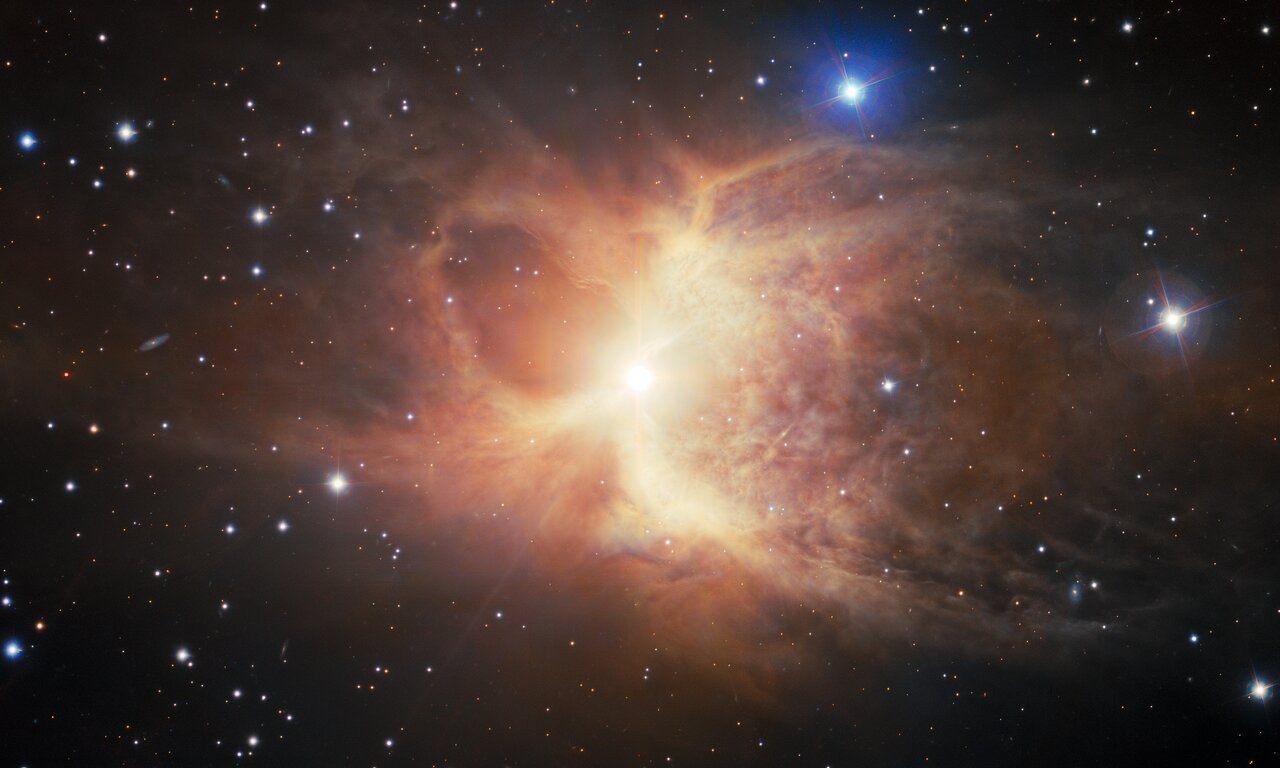Nebulae are some of the most beautiful structures that can be found in space. These are huge clouds of dust and gas illuminated by light from nearby stars. These regions are often active areas of star formation, as new stars are born from clumps of dust that form under the influence of gravity. There are various types in the category of nebulae, such as emission nebulae, where gases are ionized by radiation and glow brightly, or supernova remnants, which are structures that remain after massive stars come to the end of their lives and explode.

A recent image taken by NOIRLab’s Gemini South telescope shows a rare type of these objects called a double reflection nebula. The nebula IC 2220, known as Toby Jug Nebula, very similar to the traditional English jug, is located at a distance of 1200 light-years from us in the constellation Carina.
The main part of the nebula is two loop-like structures emanating from the center, where the red giant HR3126 is located, approaching the end of its life. Stars with a smaller mass, like our Sun, reach this stage when they start running out of fuel and inflate to large sizes before shedding layers of gas to create a planetary nebula.
“In about five billion years from now, when our Sun has burned through its supply of hydrogen, it too will become a red giant and eventually evolve into a planetary nebula. In the very distant future, all that will be left of our Solar System will be a nebula as vibrant as the Toby Jug Nebula with the slowly cooling Sun at its heart,” writes NOIRLab.
It is believed that the red giant called HR3126 is partly responsible for the unusual loop-like shape of the nebula. Astronomers suggested that the red giant once had a companion star, which had since been torn apart and turned into a dense disk of matter orbiting the red giant.This crushing of the companion star could cause the formation of a loop-like structure.
Earlier we reported on how astronomers captured the nebula in the form of a “smiling cat”.
Follow us on Twitter to get the most interesting space news in time
https://twitter.com/ust_magazine
